
|
The Astrology Center of America, 207 Victory Lane, Bel Air, MD 21014 Tel: 410-638-7761; Toll-free (orders only): 800-475-2272 |
|||||||
|---|---|---|---|---|---|---|---|
| Home | Author Index | Title Index | Subject Index | Vedic Books | Tarot | E-Mail: | |
 |
Ephemerides |
An Ephemeris (plural, ephemerides) is a daily table showing planetary positions. The first printed ephemerides date from about 1600 and were a controversial innovation. Many astrologers felt those who couldn't calculate planetary positions probably couldn't calculate - or read - a chart, either. Early hand calculated ephemerides were often inaccurate as well. Oddly enough, it wasn't the astrologers who were most interested in keeping track of planetary positions. It was the navy - the British navy, especially. Nowadays, it's the Jet Propulsion Lab in Pasadena. All modern ephemerides (and tables of houses, too) are computer generated and extremely accurate.
Sample pages are now individual pdf files. They were scanned at 100% size, 600 dpi. With a cable modem they load rather fast. PDF files can be enlarged, to see all the details.
For Sidereal, Heliocentric, Midpoint ephemerides, see Specialized Ephemerides
For Asteroid ephemerides, see Asteroids
For Tables of Houses, see Tables of Houses, Calculation Aids, etc.
For the annual Raphael and Rosicrucian, go Here.
 Indicates a book on our Top Ten list. If you would like to find more books like it, click on the star.
Indicates a book on our Top Ten list. If you would like to find more books like it, click on the star.
 MIDNIGHT 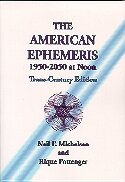 NOON
Maria Kay Simms, publisher |
||
 ASTROAMERICA'S DAILY EPHEMERIS, in three volumes, MIDNIGHT. Compiled by David R. Roell ASTROAMERICA'S DAILY EPHEMERIS, in three volumes, MIDNIGHT. Compiled by David R. Roell
|
||
2000-2020 (21 years)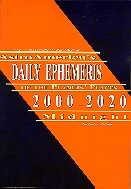
Midnight GMT |
2000-2010 (11 years)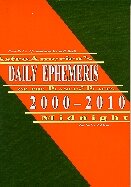
Midnight GMT |
2010-2020 (11 years)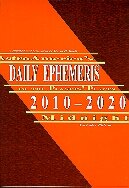
Midnight GMT |
Customer Review: Congratulations on creating a great ephemeris! I have been struggling with two different ones, neither of which, even together, have all I need. - Karen Christino, author of What Evangeline Adams Knew.Contents: For each of the three books: |
||
---- The  compiler compiler
|
||
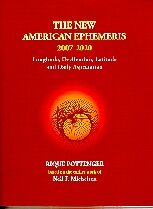
|
||
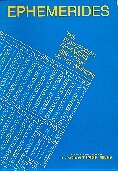 |
||
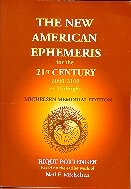
|
||

|
||
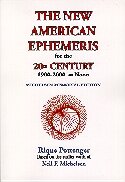 |
||
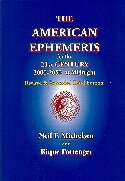 |
||
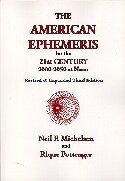 |
||

Choice of Midnight (above),
|
||
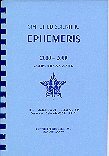 |
||||

|
||
 |
||
 |
||
For Sidereal, Heliocentric, Midpoint ephemerides, see Specialized Ephemerides
For Asteroid ephemerides, see Asteroids
For Tables of Houses, see Tables of Houses, Calculation Aids, etc.

207 Victory Lane, Bel Air, MD 21014
Tel: 410-638-7761; Toll-free (orders only): 800-475-2272
| Home | Author Index | Title Index | Subject Index | Vedic Books | Tarot | E-Mail: |
Established 1993, The Astrology Center of America is owned & operated by David Roell.
This entire site (AstroAmerica.com) is copyright 1996, 1997, 1998, 1999, 2000 by William R. Roell.
All rights reserved.